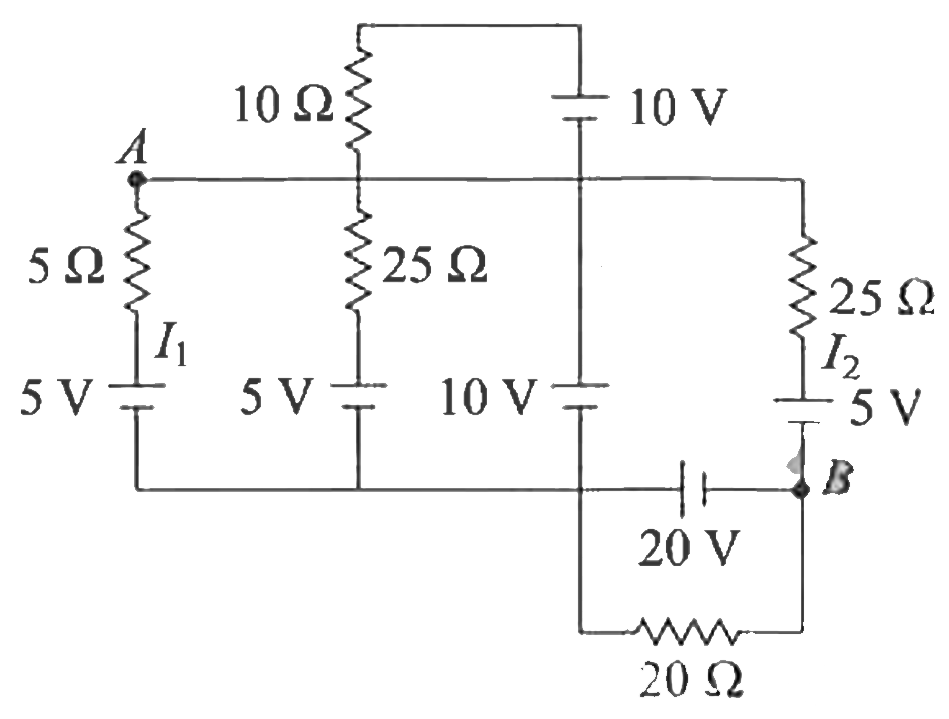The potential gradients on the potentiometer wire are V1andV2 with an ideal cell and a real cell of same emf in the primary circuit then Solution in Telugu
V1=V2
V1>V2
V1<V2
None
The correct Answer is:B
Step by step video, text & image solution for The potential gradients on the potentiometer wire are V_(1) and V_(2) with an ideal cell and a real cell of same emf in the primary circuit then by Physics experts to help you in doubts & scoring excellent marks in Class 12 exams.
Updated on:21/07/2023Topper's Solved these Questions
- CURRENT ELECTRICITYBOOK - AAKASH SERIESCHAPTER - CURRENT ELECTRICITYEXERCISE - EXERCISE - IB
44 Videos
- CURRENT ELECTRICITYBOOK - AAKASH SERIESCHAPTER - CURRENT ELECTRICITYEXERCISE - EXERCISE - II
84 Videos
- CURRENT ELECTRICITYBOOK - AAKASH SERIESCHAPTER - CURRENT ELECTRICITYEXERCISE - PROBLEMS
94 Videos
- CURRENT ELECTRICITYBOOK - AAKASH SERIESCHAPTER - CURRENT ELECTRICITYEXERCISE - PROBLEMS (LEVEL-II)
26 Videos
- DUAL NATURE OF RADIATION AND MATTERBOOK - AAKASH SERIESCHAPTER - DUAL NATURE OF RADIATION AND MATTEREXERCISE - PRACTICE EXERCISEX
44 Videos
Similar Questions
(A): Most of good conductors of heat are also good conductors of electricity and vice versa.
(R): Mainly electrons are responsible for these conductions.
View SolutionThe number of electrons striking the screen of CRT is 7.5×1015 in 10 s. Calculate the electric current.
View SolutionA total of 6.0×1016 electrons pass through any cross - section of a conducting wire per second. Find the current.
View SolutionA battery of emf 10 V and internal resistance 3Ω is connected to a resistor. If the current in the circuit is 0.5 A, what is the resistance of the resistor? What is the terminal voltage of the battery when the circuit is closed?
View SolutionTwo separate monochromatic light beams A and B of the same intensity are falling normally on a unit area of a metallic surface. Their wave lengths are λA and λB, respectively. Assuming that all the incident light is used in ejecting the photoelectrons the ratio of the photoelectrons from the beam A to that from B is :
View SolutionFor a potentiometer to function, the emf of the cell ( E ) in the primary circuit compared to the emf of the cell ( E^(1) ) in the secondary circuit should have a realtion
View SolutionThe potential gradients on the potentiometer wire are V1 and V2 with an ideal cell and a real cell of same emf in the primary circuit, then
View SolutionA cell of negligible internal resistance is connected to a potentiometer wire and potential gradient is found. Keeping the length as constant, if the radius of potentiometer wire is increased four times, the potential gradient will become (no series resistance in primary)
View SolutionAssertion: The emf of the cell in secondary circuit must be less than emf of cell in primary circuit in potentiometer. Reason: Balancing length cannot be more than length of potentiometer wire.
View SolutionConsider the circuit shown in the figure, the cell is ideal. The readings of the ideal voltmeters V_(1) and V_(2) in volts are respectively.
View SolutionA potentiometer consists of a wire of length 4 m and resistance 10Ω. It is connected to a cell of emf 2V.The potential gradient of the wire is
View SolutionThe circuit consists of resistors and ideal cells. I1 and I2 are current through branches indicated in the figure, VA and VB is the potential at points A and B on the circuit

The value of VA−VB in volts is:
View SolutionA resistance of 990Ω and a cell of emf 2 V is connected in series with a potentiometer wire having a length 2 m and resistance 10Ω. The potential gradient along the wire will be
View SolutionAssertion: The emf of the cell in secondary circuit must be less than emf of cell in primary circuit in potentiometer.
Reason: Balancing length cannot be more than length of potentiometer wire.
View SolutionThe length of a potentiometer wires is l.A cell of emf E is balanced at a length ((l)/(3)) from positive end of the wire . If the length of the wire is increased by ((l)/(2)) the distance at which the same cell gives the balancing point is ( Cell in the primary is ideal and no series resistance is present in the primary circuit . )
View Solution
